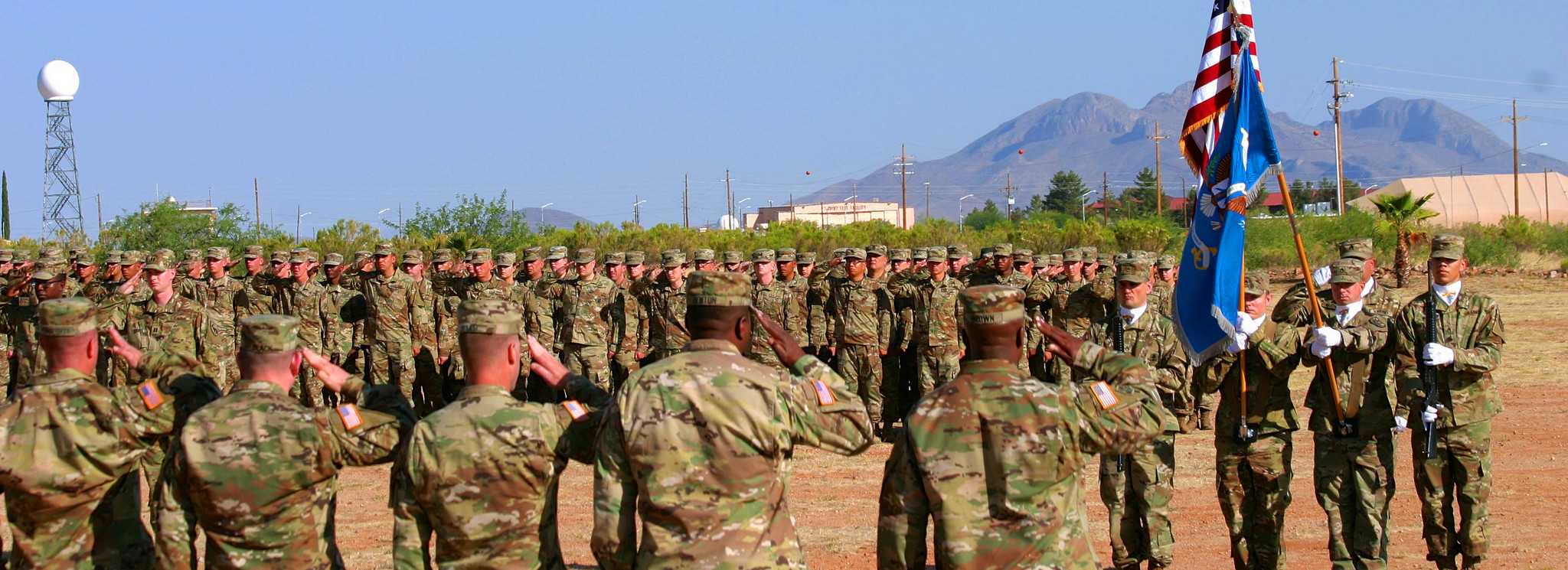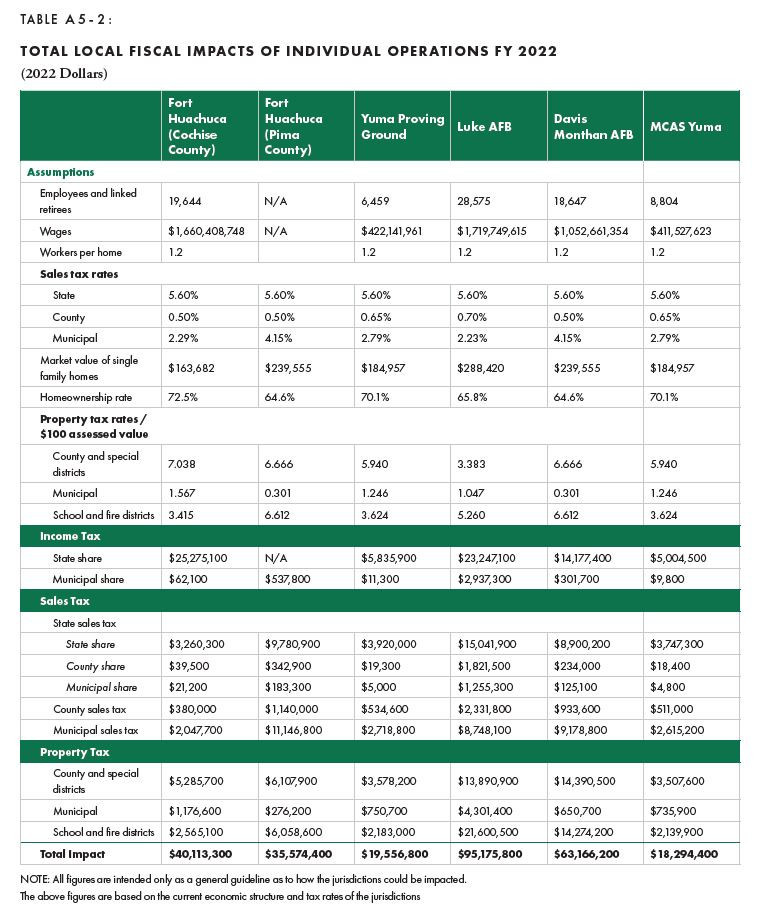Military Intelligence, Cybersecurity & Unmanned Aircraft Systems
Fort Huachuca is located in Cochise County in southeastern Arizona, on the western slope of the San Pedro River Valley. The Fort supports a diverse mission set: as an individual training base for Military Intelligence and Unmanned Aircraft System (UAS) Soldiers; as an operations platform supporting Army Networks Operations; and as a communications, intelligence, and electronic warfare test and valuation platform. Four different training units conduct 78 courses, training and educating over 12,000 service members and civilians. These missions are conducted by the US Army Intelligence Center of Excellence (USAICOE), Network Enterprise Technology Command (NETCOM), US Army Information Systems Engineering Command (ISEC), the Joint Interoperability Test Command (JITC), Intelligence Electronic Warfare Test Directorate (IEWTD), US Army Electronic Proving Ground (EPG), and the 2nd Battalion 13th Aviation Regiment. Numerous additional tenant/partner support organizations and their missions are located on the Fort as well.
19,644
Fort Huachuca employees and linked retirees, FY2022
$1,660 million
Fort Huachuca wages, FY2022
$4.3 billion
Fort Huachuca statewide impact, FY2022
The Military Intelligence (MI) training mission encompasses training, organizing, and equipping MI professionals to support the nation’s war fighting requirements throughout the operational continuum. The Intelligence Center offers over 47 courses ranging from Initial Entry Training and Noncommissioned Officer Courses to Officer Advanced Courses. During the year, USAICoE trains and educates approximately 9,000 Service Members and Civilians. The Intelligence Center’s Capabilities Development and Integration Directorate is at the forefront of Military Intelligence Future Force and Doctrine development, ensuring the MI Corps is prepared for future operations. The Human Intelligence Training Joint Center of Excellence located at Fort Huachuca provides the Department of Defense premiere training. Rounding out the individual training mission is the 2nd Battalion 13th Aviation Regiment, operating the largest UAS training center in the world. Each year, the 2-13th Aviation Regiment trains approximately 2,000 Soldiers across 12 distinct programs of instruction including: RQ-7B Shadow UAS Operator and Repairer; MQ-1C Gray Eagle UAS Operator and Repairer; UAS Instructor Operator Course; 150U UAS Warrant Officer Technician; UAS Resident Instructor Course; and the UAS Command and Staff Leaders Course.
NETCOM is the primary operational mission element on the Fort. The Headquarters for NETCOM is responsible for operating and defending the Army’s network worldwide and is supported by elements of the Communication Electronic Command’s ISEC and the Communications Security Logistics Activity.
Because of the ideal terrain and topography of southeast Arizona, Fort Huachuca is the primary location for developmental testing of all the Army’s Communications Electronics systems as well as the operational testing of all the Army’s Intelligence Electronic Warfare systems. Co-located with the Department of Defense (DoD) JITC, almost every DoD system that communicates or collects intelligence on the battlefield will pass through one or both of the EPG and JITC during their development and eventual interoperability certification before final fielding to the Services.
The US Army Garrison at Fort Huachuca has command and control of functions which include operations, maintenance, and security of Fort Huachuca as well as responsibility for all stationing and quality of life (morale, welfare, recreation, child care and development). Many of the active duty military and their family members live on post in privatized housing with 1,064 individual homes in ten housing areas. As for military barracks locations, there are 4,825 units on Fort Huachuca.
Fort Huachuca’s strategic assets that support the diverse missions performed are the Buffalo Soldier Electronic Test Range (BSETR) and the R2303 Military Restricted Airspace. The BSETR comprises 2,500 square miles in western Cochise and eastern Santa Cruz Counties in southeast Arizona. Codified in Arizona State Statute as a military electronics testing range, the BSETR provides a low electromagnetic noise environment that supports the Fort’s diverse testing and training missions.
In 2022 Fort Huachuca dedicated the 1LT John R Fox Multi Domain Operations Non-Kinetic Range Complex. This non-kinetic range is the first of its type in the Army, designed to train and enhance the army’s capability in the multi-domain environment with full development and representation of threat capabilities and activities across the electromagnetic spectrum. This range will support warfighting concepts and modernization required for the Army to reach its goals for 2030 and 2040.
The 946 square miles of the R2303 airspace is contained within the BSETR operations area and is completely separated from any competing commercial air traffic corridors. Fort Huachuca has scheduling and operational control of Restricted Airspace including areas R-2303A, R-2303B, and R-2303C (totaling 941sqmi) and Delegated Airspace North, North East and South of the Restricted, totaling an additional 200sqmi. Both Restricted and Delegated Airspace is used by Department of Defense Manned and Unmanned Aircraft Systems for both training and testing. Airspace is active for approximately 24 hours per weekday; controlled and deconflicted by Libby Army Airfield Air Traffic Control/ Radar. When not in use by the military, typically the weekends and federal holidays, all airspace reverts back to the Federal Aviation Administration’s Albuquerque Center for airspace control .Supported by Libby Army Airfields 12,000 foot long main runway, as well as multiple UAS airstrips and the 4,600 foot Hubbard Dirt Assault strip, main airspace users currently include the 2-13th for training on the Shadow Tactical Unmanned Aerial System, Gray Eagle class of air vehicles, and 111th MI Brigade’s Special Electronic Mission Aircraft along with other testing used by the Electronic Proving Ground.
Other users of Special Use Airspace and the Joint-Use Libby Airfield include the Advanced Airlift Tactics Training School operated for the Department of Defense by Missouri Air Guard, the USAF 162nd Fighter Wing, The Thunderbirds with their F-16s, and the 355th Air Wing’s A-10s, US Special Operations Command’s Naval Special Warfare, US Army Special Operations Command’s 160th Special Operations Aviation Regiment, 10th Mountain Division Shadow UAS, JTF-N (Various aircraft, both manned and Unmanned), the U. S. Forest Service air tankers, 214th Reconnaissance Group (AZ Air National Guard), the US Customs/Border Patrol Reaper MQ-9 UAS and Municipal Aircraft.
In addition to the BSETR, R2303, and MDO Range capabilities at the Fort, there are fourteen live fire ranges, two Demo Ranges, one laser and other training facilities including Rappel Tower/Cliffs, Leadership Reaction Course, Aircraft loading mock-up, Obstacle Course, Confidence Course, Mask Confidence Chamber, Assault Landing Strip, six Airborne Drop Zones, three Land Navigation Courses, Grenade Assault Course (non-firing), and four Urban Operations sites.
Fort Huachuca has been on the leading edge of our Nation’s Defense since 1881 and remains a key resource for the Department of Defense.
SOURCE: Military Affairs Commission 2023 Economic Impact of Arizona’s Principal Military Operations

